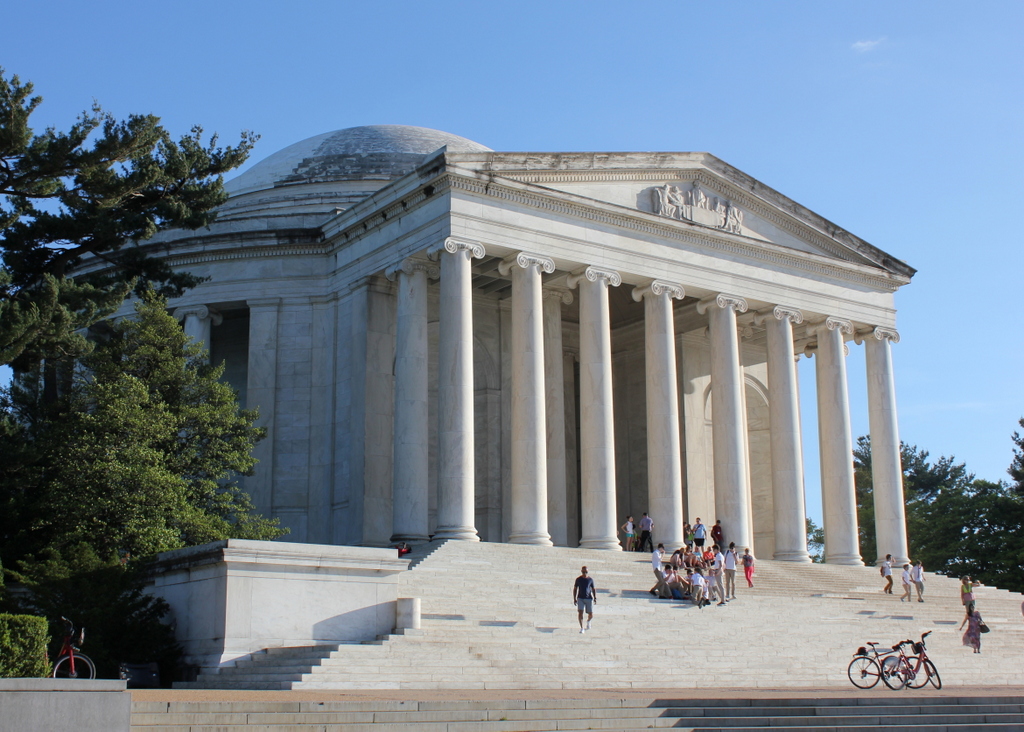The Jefferson Memorial in Washington, DC, on April 12, 1943. Image taken by Ann Rosener, courtesy of the Library of Congress, Detroit Publishing Company Collection.
The scene in 2018:
The Jefferson Memorial is, along with the Washington Monument and Lincoln Memorial, one of the three major monuments to prominent United States presidents here in Washington, D.C. It was built on the south side of the Tidal Basin, nearly in line with the White House and the Washington Monument, and its construction was championed by Franklin D. Roosevelt, who admired Jefferson.
The design of the memorial was the work of noted architect John Russell Pope, who was also responsible for the National Archives building and the West Building of the National Gallery of Art. Like these other two buildings, Pope’s designs for the Jefferson Memorial drew heavily from classical architecture, and it features a large columned portico on the front. It bears a particularly strong resemblance to the Pantheon, with its domed rotunda behind the portico.
However, Pope never lived to see the project completed; he died in 1937, two years before the cornerstone was laid. The construction took four years, but it was completed in 1943, in the midst of World War II. The memorial was formally dedicated on April 13, 1943, just one day after the first photo was taken. This was the 200th anniversary of Jefferson’s birth, and the ceremony was attended by Franklin D. Roosevelt, who gave the dedication address.
Today, more than 75 years after the first photo was taken, essentially nothing has changed in this scene except for the size of the trees on either side of the memorial. During this time, the only significant change to the memorial has been the 19-foot statue of Jefferson in the center of the rotunda. This statue, which is not visible from this particular angle, was delayed because of wartime shortages of bronze, but it was installed in 1947, and it has stood here ever since, facing across the Tidal Basin in the direction of the White House.


